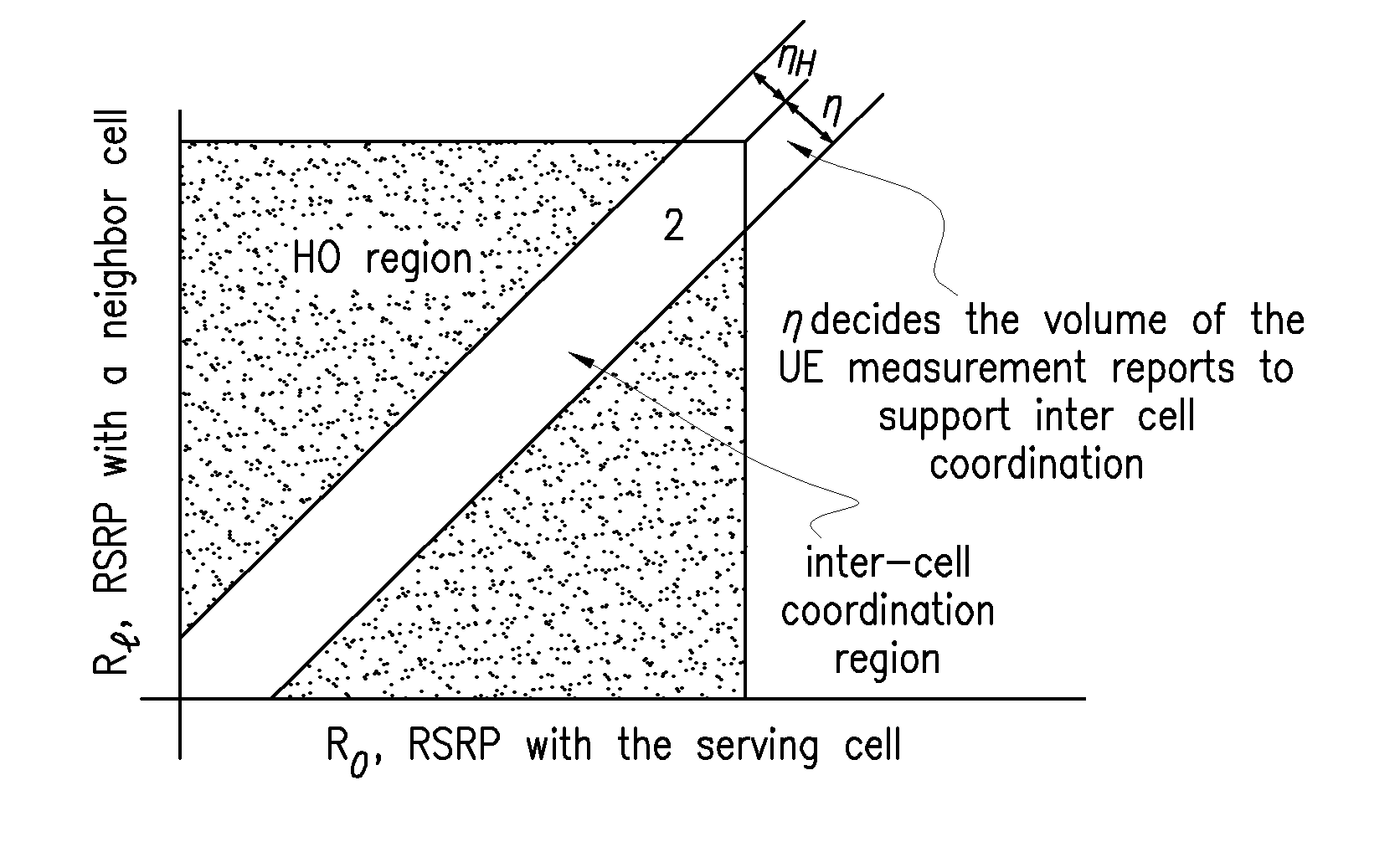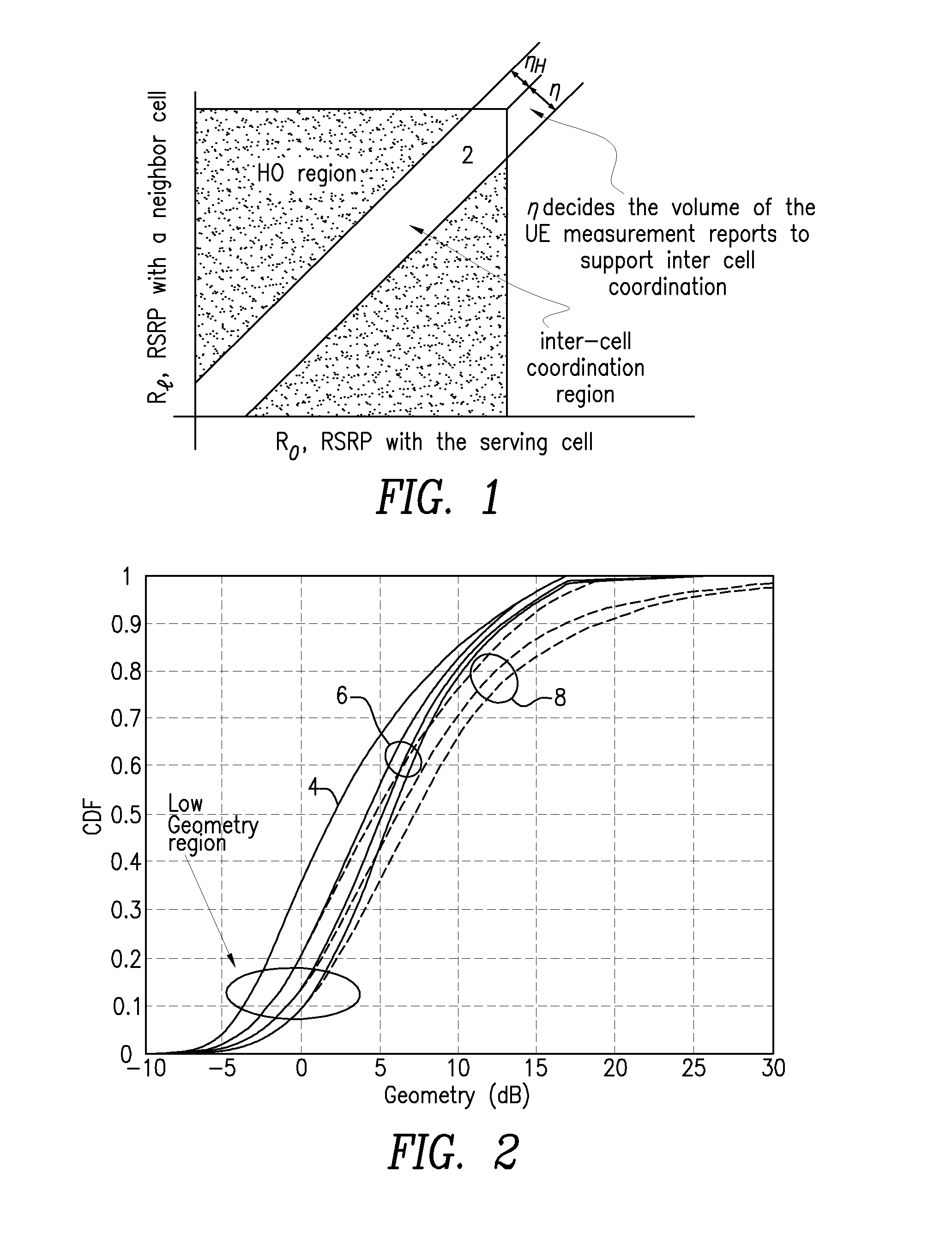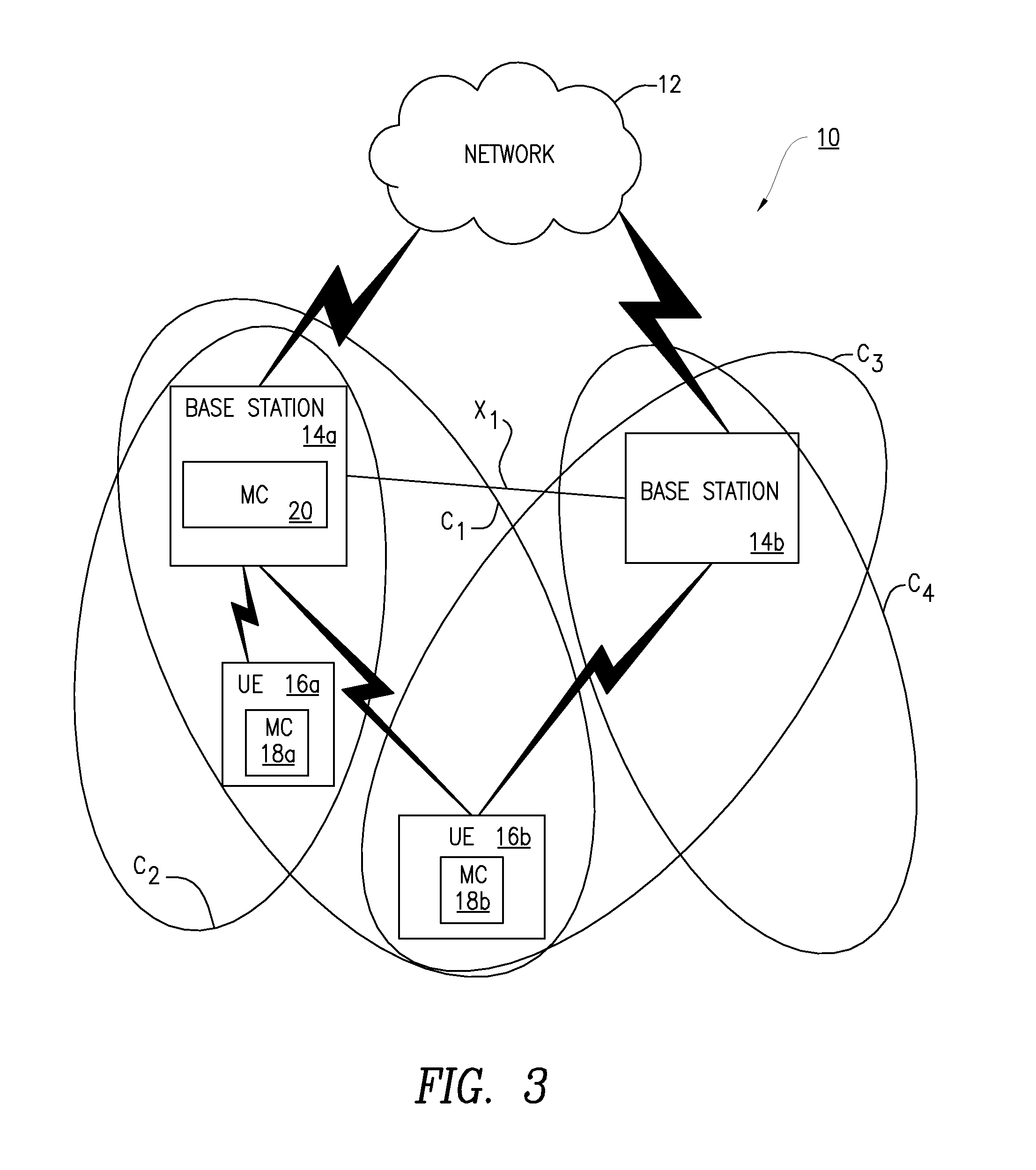Inter-cell coordination in cellular deployment
- Summary
- Abstract
- Description
- Claims
- Application Information
AI Technical Summary
Benefits of technology
Problems solved by technology
Method used
Image
Examples
Embodiment Construction
[0032]Before describing in detail exemplary embodiments that are in accordance with the present disclosure, it is noted that the embodiments reside primarily in combinations of apparatus components and processing steps related to determining when to trigger a UE measurement report so that the UE will benefit from inter-cell coordination and determining when inter-cell coordination would likely result in improved performance. Accordingly, the device, system and method components have been represented where appropriate by conventional symbols in the drawings, showing those specific details that are pertinent to understanding the embodiments of the present disclosure.
[0033]As used herein, relational terms, such as “first” and “second,”“top” and “bottom,” and the like, may be used solely to distinguish one entity or element from another entity or element without necessarily requiring or implying any physical or logical relationship or order between such entities or elements.
[0034]Embodi...
PUM
 Login to View More
Login to View More Abstract
Description
Claims
Application Information
 Login to View More
Login to View More - Generate Ideas
- Intellectual Property
- Life Sciences
- Materials
- Tech Scout
- Unparalleled Data Quality
- Higher Quality Content
- 60% Fewer Hallucinations
Browse by: Latest US Patents, China's latest patents, Technical Efficacy Thesaurus, Application Domain, Technology Topic, Popular Technical Reports.
© 2025 PatSnap. All rights reserved.Legal|Privacy policy|Modern Slavery Act Transparency Statement|Sitemap|About US| Contact US: help@patsnap.com



